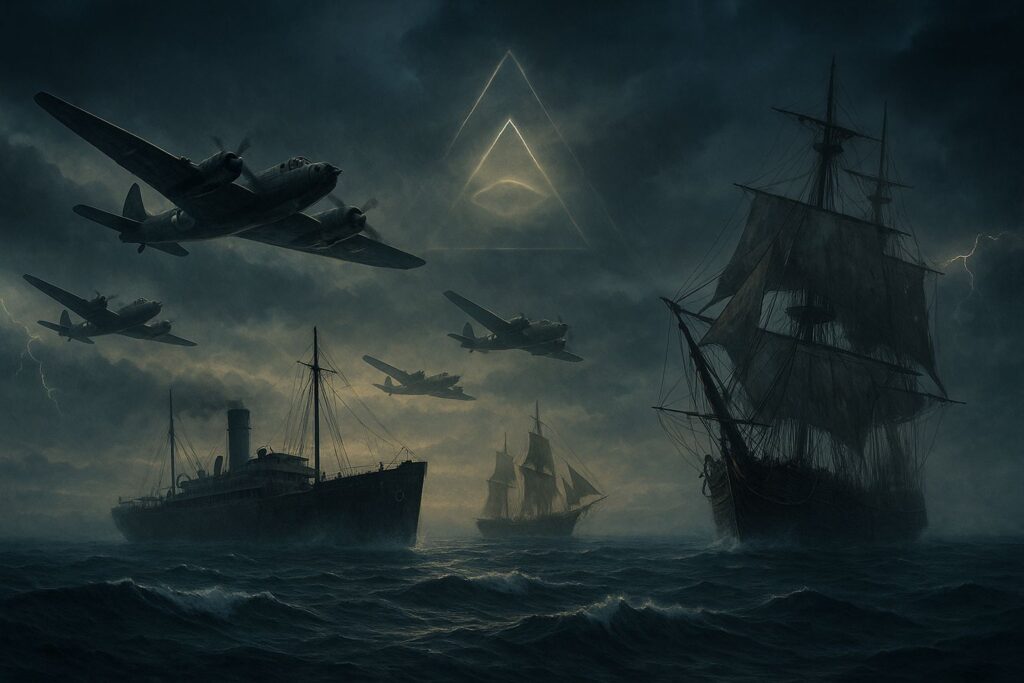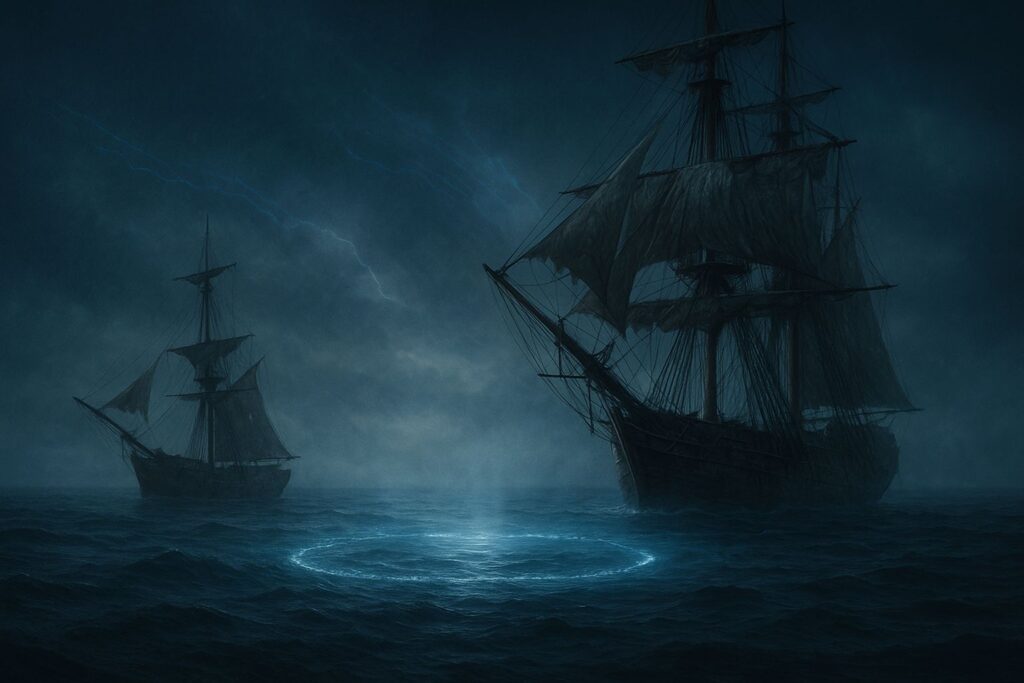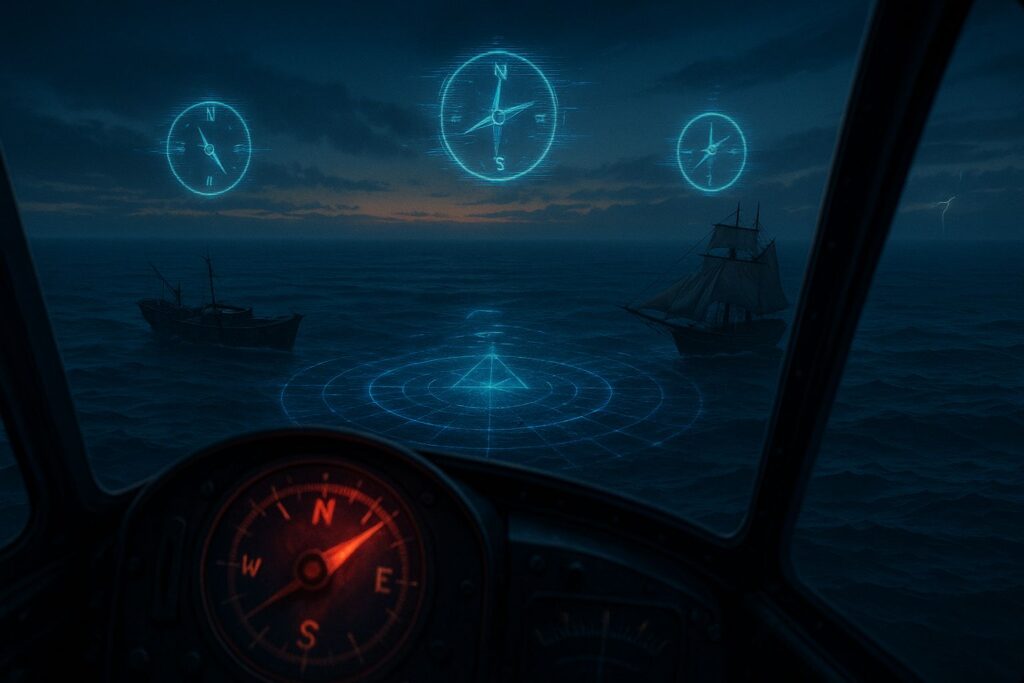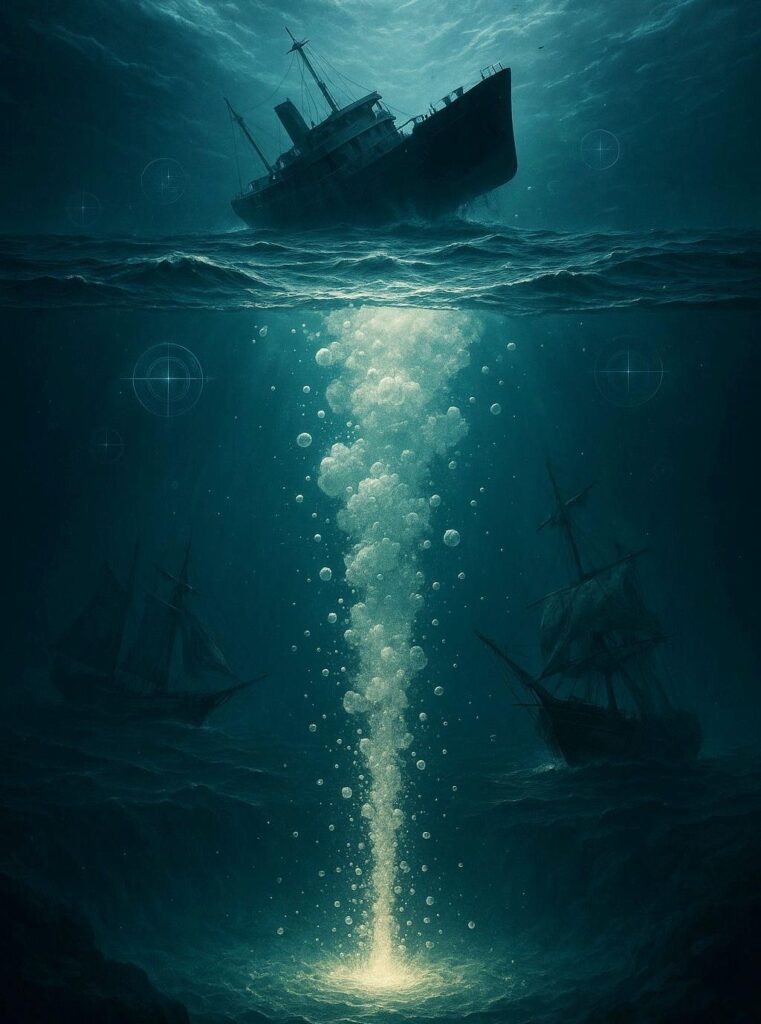Inside the Bermuda Triangle: Vanished Planes, Ghost Ships, and Scientific Clues

For centuries, whispers of a mysterious stretch of ocean have captivated imaginations and fueled countless tales of inexplicable disappearances. This vast expanse, often depicted as a triangular region in the western North Atlantic, has become synonymous with vanished ships and aircraft, leaving behind a legacy of intrigue and unanswered questions. Is it a place where the laws of nature bend, or do more rational explanations lie beneath the surface of its enigmatic waters?
The Vanishing Act: Notable Incidents
One of the most compelling narratives contributing to the Bermuda Triangle’s mystique is the disappearance of Flight 19. On December 5, 1945, five U.S. Navy torpedo bomber aircraft embarked on a routine three-hour training mission from Florida. Aboard were 14 experienced crew members, led by a seasoned pilot and war veteran. The initial hours of the flight were uneventful, with clear weather conditions. However, approximately two hours after takeoff, the squadron leader reported critical malfunctions with their compasses.
Both primary and backup instruments failed, leaving the crew disoriented and unable to determine their precise location. Conflicting reports and increasingly confused radio transmissions followed, exacerbated by rapidly deteriorating weather. Despite the squadron leader’s belief that they were over the Gulf of Mexico and needed to fly east to return to Florida, some crew members held a different conviction, arguing they were already east of Florida and should head west.

This internal disagreement further complicated their desperate attempts to navigate. As sunset approached and darkness enveloped the sky, the planes were estimated to be 370 kilometers east of Florida. The last radio transmission from the squadron leader was received at 7:04 PM. After this, all five planes, along with their 14 crew members, vanished without a trace. Extensive search-and- rescue operations were immediately launched, including a Mariner aircraft with 13 crew members dispatched to find Flight 19.
Tragically, this rescue plane also disappeared, adding another layer to the unfolding mystery. Despite one of the largest air-and-sea search operations of its time, no wreckage, bodies, or any definitive clues were ever found for either Flight 19 or its rescue mission. The area where these disappearances occurred would later become widely known as the Bermuda Triangle.
The Ill-Fated USS Cyclops
Another chilling incident that has fueled the legend of the Bermuda Triangle is the disappearance of the USS Cyclops in 1918. This massive vessel, one of the U.S. Navy’s largest and fastest ships at the time, was a crucial asset, especially during World War I, transporting troops and coal. On March 4, 1918, with 306 people and 11,000 tonnes of manganese ore on board, the USS Cyclops departed from a city near Washington, en route to Brazil.
The journey was expected to take nine days, and its departure was uneventful, with clear weather. However, a final message sent from the ship marked the last communication ever received. The USS Cyclops vanished without a trace, leaving naval authorities and the public stunned. The sudden disappearance of such a colossal ship, seemingly swallowed by the ocean, remains one of the most perplexing maritime mysteries.
The Ghost Ship: Ellen Austin
The tale of the Ellen Austin, though widely considered an urban legend, adds a particularly eerie dimension to the Bermuda Triangle narrative. In 1881, the 210-foot Ellen Austin, a ship regularly traversing the route from London to New York, reportedly encountered an abandoned vessel near the Bermuda Triangle. The unidentified ship appeared normal from the outside, but upon inspection, it was found to be completely deserted, with no crew or any sign of human presence.

Curiously, all valuable items on board were intact, ruling out piracy as a cause for its abandonment. The captain of the Ellen Austin, after waiting two days for any sign of life, decided to send some of his own crew members to sail the mysterious ship alongside his. For two days, both ships proceeded normally, until a storm separated them. After the storm, the Ellen Austin’s captain spotted the ship again, only to find it once more deserted. The crew members he had placed on board had vanished.
The story goes that a second attempt to man the ship also resulted in the disappearance of another crew after yet another storm. While the veracity of this account is debated, it underscores the kind of unsettling narratives that have become intertwined with the Bermuda Triangle’s lore.
Unraveling the Mystery: Theories and Explanations
The enduring mystery of the Bermuda Triangle has given rise to numerous theories, ranging from the outlandish to the scientifically plausible. While some speculate about alien abductions or giant sea monsters, more grounded explanations attempt to demystify the phenomena. It’s important to note that many rational thinkers consider the Bermuda Triangle more of an urban legend, with incidents often exaggerated or misattributed.

Magnetic Anomalies
One scientific theory points to the Earth’s magnetic field. The Earth’s geographic North Pole and magnetic North Pole are distinct points. While navigators typically account for this difference, there are specific areas on Earth where the magnetic and geographic North Poles align, known as agonic lines. Historically, a 0° agonic line has been located in or around the Bermuda Triangle for the past 200-300 years. This alignment can cause compasses to point directly to true north, rather than magnetic north, potentially leading to navigational confusion for those unaware of this specific anomaly.
Shallow Waters and Hidden Shoals
Another contributing factor could be the geographical characteristics of the region. Parts of the Bermuda Triangle, particularly around the Bahamas and Caribbean Islands, are remarkably shallow. Satellite imagery reveals vast stretches of turquoise waters indicating shallow depths, contrasting sharply with the dark blue of the deep ocean. In earlier times, ships could easily run aground on hidden shoals ‒ elevated areas of the seabed not visible from the surface ‒ leading to vessels becoming stuck or damaged, and potentially abandoned.
Extreme Weather Conditions
The Bermuda Triangle is also known for its volatile weather. It experiences one of the highest rates of hurricanes in the world. Regions like Cuba and Florida, which lie within this area, are frequently hit by powerful storms, including hurricanes and water sprouts. Such extreme weather events can rapidly create treacherous conditions, overwhelming even modern vessels and aircraft, leading to sudden and catastrophic disappearances without a trace. The sheer frequency and intensity of these natural phenomena undoubtedly contribute to the region’s reputation for danger.
Methane Hydrates
A more recent and intriguing scientific hypothesis involves methane hydrates. Beneath certain oceanic areas, including parts of the Bermuda Triangle, vast deposits of methane hydrates exist. Laboratory experiments have shown that if these methane deposits are disturbed, perhaps by seismic activity, they can release large quantities of methane gas bubbles into the water. This influx of gas significantly reduces the water’s density, causing ships to lose buoyancy and sink rapidly without warning.

The concept is similar to how high salt content increases water density, making it easier to float (as seen in the Dead Sea); conversely, methane bubbles decrease density, making it impossible for vessels to stay afloat. While scientifically plausible, direct evidence linking specific disappearances in the Bermuda Triangle to methane hydrate eruptions has yet to be conclusively proven.
The Baader-Meinhof Effect (Frequency Illusion)
Perhaps the most compelling explanation, rooted in human psychology, is the Baader- Meinhof Effect, also known as Frequency Illusion. This psychological phenomenon describes how, once we become aware of something, we tend to notice it more frequently in our environment. For instance, after buying a specific car model, one might suddenly perceive that same model everywhere on the road, even though its actual prevalence hasn’t changed. The same principle applies to the Bermuda Triangle.
While disappearances of ships and aircraft occur across all oceans globally, the intense media attention and popular culture surrounding the Bermuda Triangle have led people to disproportionately notice and attribute incidents to this specific area. Incidents occurring elsewhere, even if similar in nature, often go unnoticed or are quickly forgotten. Journalist Larry Kusche, in his book ‘The Bermuda Triangle Mystery Solved,’ meticulously investigated many of the alleged disappearances and concluded that many were either exaggerated, inaccurately reported, or never happened at all.
He found that the initial incidents, though real, were amplified over time, leading to the creation of fabricated stories and mystery-mongering. The story of the Ellen Austin, for example, is often cited as one such fabrication. Official statements from reputable organizations further support this rational perspective. The National Oceanic and Atmospheric Administration (NOAA) of the U.S. states that there is no evidence to suggest that mysterious disappearances of aircraft and ships occur more frequently in the Bermuda Triangle than in any other heavily trafficked area of the ocean.

Similarly, the United States Coast Guard does not recognize the Bermuda Triangle as a hazardous area, noting that the high volume of air and sea traffic in the region, combined with frequent hurricanes and the presence of the Gulf Stream, naturally increases the likelihood of incidents. When these factors are considered, the disappearances, while tragic, often have straightforward explanations.
Also Read: Mystery of D.B. Cooper – Conspiracy Theories, Suspects, and New Evidence Explored
Conclusion
The allure of the Bermuda Triangle lies in its mysterious reputation, fueled by captivating tales and the human tendency to seek extraordinary explanations for complex events. While the incidents within its boundaries are undeniable, a closer examination, supported by scientific understanding and psychological insights, reveals that the enigma may not be as supernatural as popular culture suggests. The combination of challenging natural conditions, navigational complexities, and the powerful influence of human perception likely accounts for the majority of the disappearances. Ultimately, the Bermuda Triangle serves as a compelling reminder of the ocean’s immense power and the enduring human fascination with the unknown, even when rational explanations are readily available.


